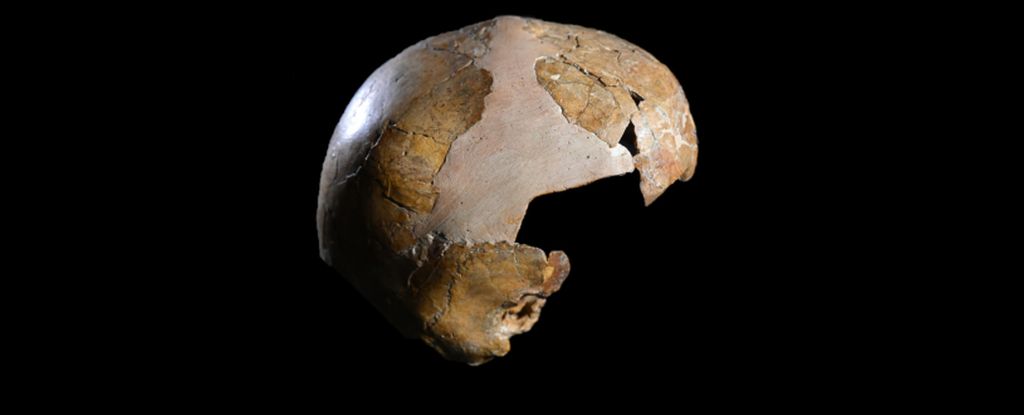A recently analyzed skull of a small child, dating back approximately 140,000 years, provides the oldest known physical evidence of the interbreeding between anatomically modern humans and Neanderthals. This discovery not only offers insights into our shared ancestry but also reshapes the timeline of Neanderthal migration into what is now Israel.
The skull, unearthed in 1931 during excavations at Skhūl Cave on Mount Carmel, was part of a burial site recognized as the earliest known organized burial ground. The remains, believed to belong to a child who died between the ages of three and five, included a partial cranium and mandible. Initially classified as those of an early modern human, recent research has revealed distinct features indicative of both Neanderthals and Homo sapiens.
In a study led by anthropologist Israel Hershkovitz from Tel Aviv University, high-resolution 3D scans of the skull were conducted to analyze its structure. The findings suggest that the child’s skull resembles that of Homo sapiens, particularly in its overall shape and curvature. However, it also displays traits typical of Neanderthals, such as the intracranial blood supply system, lower jaw, and inner ear structure.
Revisiting Historical Assumptions
Historically, it was believed that Neanderthals did not inhabit the region until around 70,000 years ago. This assumption was challenged by a 2021 study that identified fossilized remains in Israel with Neanderthal characteristics, indicating their presence as far back as 400,000 years ago. The joint research effort involving the French National Museum of Natural History, the University of Liege, and Tel Aviv University aimed to revisit the classification of the Skhūl child in light of these new findings.
The research team discovered that the fossils previously attributed solely to early Homo sapiens were actually the result of genetic mixing with a local Neanderthal population. Hershkovitz stated, “The fossil we studied is the earliest known physical evidence of mating between Neanderthals and Homo sapiens.” This breakthrough emphasizes the complexity of human ancestry and interbreeding patterns.
Implications for Understanding Human Ancestry
The implications of this discovery extend beyond the Skhūl child. By analyzing the features of the skull and understanding the genetic contributions of Neanderthals to modern humans, researchers can paint a clearer picture of our evolutionary history. The continuous genetic infiltration from the Neanderthal population into early Homo sapiens highlights a dynamic interaction between the two species.
The findings have been published in the journal L’Anthropologie, marking a significant contribution to our understanding of human evolution. As research continues, it becomes increasingly clear that the story of humanity is one of intricate relationships and shared histories, profoundly shaped by the interbreeding of our species with our closest relatives.
This new evidence not only enriches our understanding of Neanderthals but also illustrates the complex tapestry of human ancestry, providing a clearer view of how these two species coexisted and interacted over millennia.































































